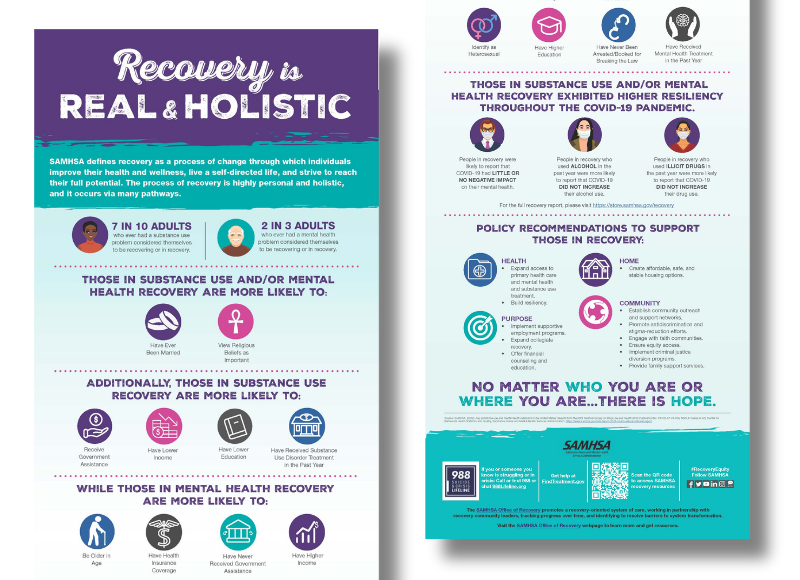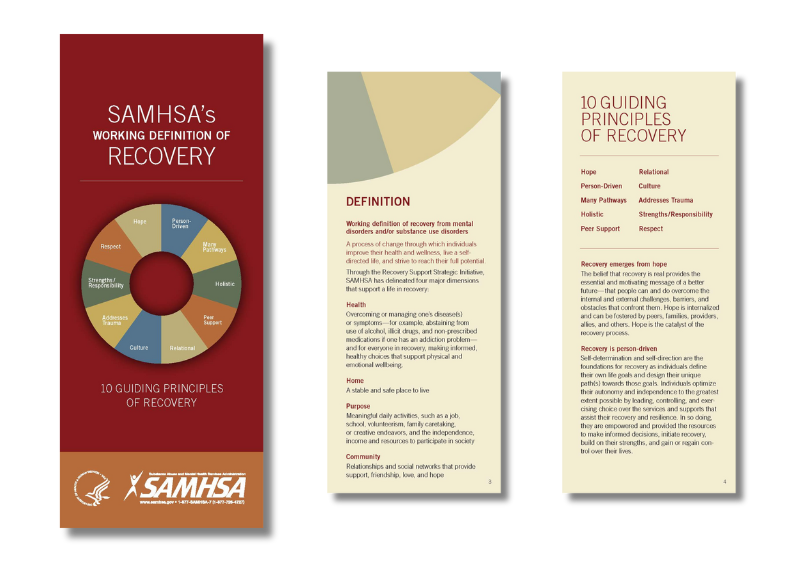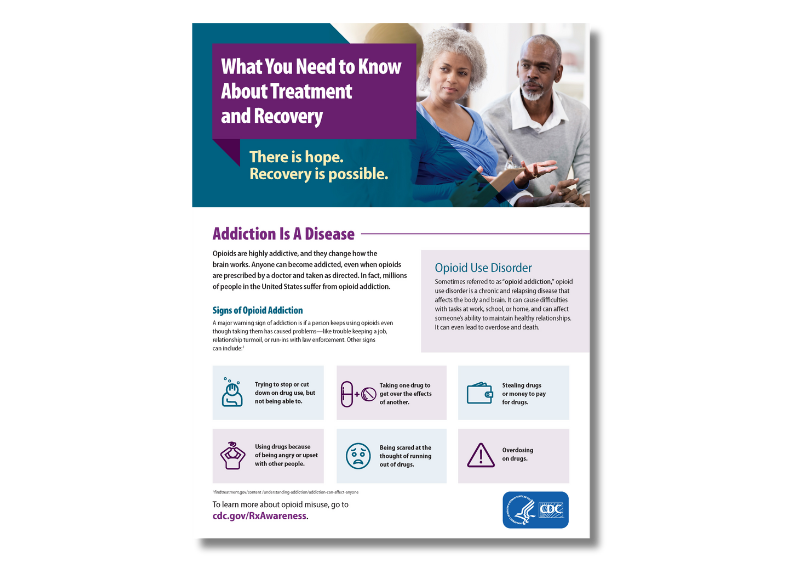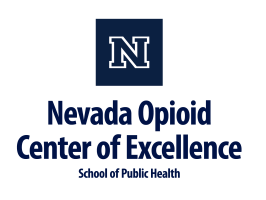SAMHSA’s working definition of recovery defines recovery as a process of change through which individuals improve their health and wellness, live self-directed lives, and strive to reach their full potential. Recovery signals a dramatic shift in the expectation for positive outcomes for individuals who experience mental and substance use conditions or the co-occurring of the two.
Guiding Principles
Hope, the belief that these challenges and conditions can be overcome, is the foundation of recovery. A person’s recovery is built on his or her strengths, talents, coping abilities, resources, and inherent values. It is holistic, addresses the whole person and their community, and is supported by peers, friends, and family members.
The process of recovery is highly personal and occurs via many pathways. It may include clinical treatment, medications, faith-based approaches, peer support, family support, self-care, and other approaches. Recovery is characterized by continual growth and improvement in one’s health and wellness and managing setbacks. Because setbacks are a natural part of life, resilience becomes a key component of recovery.
The Four Major Dimensions of Recovery
- Health – Overcoming or managing one’s disease(s) or symptoms – for example, abstaining from use of alcohol, illicit drugs, and non-prescribed medication if one has an addiction problem- and for everyone in recovery making informed, healthy choices that support physical and emotional well-being
- Home – Having a stable and safe place to live
- Purpose – Conducting meaningful daily activities, such as a job, school volunteerism, family caretaking, or creative endeavors, and the independence, income, and resources to participate in society
- Community – Having relationships and social networks that provide support, friendship, love, and hope
Websites
Nevada Recovery Friendly Workplace
Faces & Voices of Recovery
SMART Recovery
Tools & Resources
SPARK Resource Center
Recovery Friendly Workplace Toolkit
Best Practices in Recovery Housing
National Recovery Month
Medication for Opioid Use Disorder (MOUD) Tool Kit for Peer Recovery Specialists
Publications
Drugs, Brains, and Behavior: The Science of Addiction Treatment and Recovery
National Institute on Drug Addiction (NIDA) – About Recovery
Decisions in Recovery: Treatment for Opioid Use Disorders
SAMHSA – Recovery and Recovery Support
In My Own Words
Posters & Infographics

Infographic: Recovery is Real and Holistic

SAMHSA’s Working Definition of Recovery

